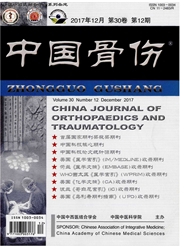

 中文摘要:
中文摘要:
骨关节炎(OA)的临床诊断尚缺乏有效的生物学标志物。研究证实标志物Ⅱ型胶原羧基端交联肽(CTX-Ⅱ)是关节软骨降解的特异性指标。CTX-Ⅱ检测可及时反映软骨损伤和退变程度、诊断OA发生、预测OA进展和监测药物治疗效果,从而间接反映OA患者的病情。CTX-Ⅱ的应用主要集中于OA早期,并需联合其他生物学标志物一起检测,以便更准确的反映OA病变,但其检测结果具体临床指导意义还需进一步完善。
 英文摘要:
英文摘要:
Effective biomarkers for clinical usage of osteoarthritis are still limited. It was confirmed that C-terminal crosslinking telopeptide of type Ⅱ collagen (CTX-Ⅱ ) was a specific marker reflecting degradation of articular cartilage. Detec- tion of CTX- Ⅱcould promptly ref/ect level of cartilage injury and degradation, diagnose OA, predict its progress, monitor effects of drug treatment, thus, reflect the condition of osteoarthritis patient indirectly. Application of CTX-Ⅱ focused mainly on in the early stage of OA and need together to detect with other biomarkers,in order to more accurately reflection of the patho- logical changes of OA,but the specific clinical significance of CTX-Ⅱ results still need to improve further.
 同期刊论文项目
同期刊论文项目
 同项目期刊论文
同项目期刊论文
 Influence of pain severity on health-related quality of life in Chinese knee osteoarthritis patients
Influence of pain severity on health-related quality of life in Chinese knee osteoarthritis patients Glucan HBP-A Increase Type II Collagen Expression of Chondrocytes in vitro and Tissue Engineered Car
Glucan HBP-A Increase Type II Collagen Expression of Chondrocytes in vitro and Tissue Engineered Car Individually Integrated Traditional Chinese Medicine approach in the management of knee osteoarthrit
Individually Integrated Traditional Chinese Medicine approach in the management of knee osteoarthrit 期刊信息
期刊信息
